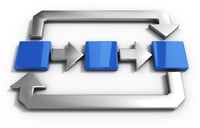By Chris Avery, Director of Strategic Products Divsion at EEC
When designing a data center and choosing critical hardware, it’s easy to see beauty in simplicity, reliability and cost-effectiveness. Today, technology has evolved to include a new approach to paralleled generator systems known as modular integration – a scalable, reliable and affordable solution to the traditional complexity within traditional paralleled generators.
Antiquated practices are no longer the optimal choice when planning a mission critical facility, giving way to new approaches and innovations. Traditionally, paralleling gear was the only game in town, meaning high capital costs, complex systems and a large physical footprint – all causing unnecessary headache for designers and operators. With the latest in integrated design, these issues are a thing of the past, as multiple generators have the ability to be digitally paralleled, eliminating the need for additional gear when running standby generators.
In order to understand why integration could be the right choice for your facility, it’s important to first comprehend the difference between integrated and traditional paralleling systems. There are four major requirements to consider when analyzing the functions of paralleled generators, which include synchronization, load sharing, protection and point of synchronization.
 Synchronization is necessary in all paralleling systems, however traditional generators rely on third-party components to drive and regulate controls. By contrast, onboard, integrated systems incorporate these controls digitally within the generator itself. Load sharing among paralleled generators must be equal, lest one generator becomes the “motor,” pulling load from the other. This function in traditional systems is controlled via precise cabling, whereas load sharing takes place within an integrated system providing unparalleled flexibility in placement and design (pun intended).
Synchronization is necessary in all paralleling systems, however traditional generators rely on third-party components to drive and regulate controls. By contrast, onboard, integrated systems incorporate these controls digitally within the generator itself. Load sharing among paralleled generators must be equal, lest one generator becomes the “motor,” pulling load from the other. This function in traditional systems is controlled via precise cabling, whereas load sharing takes place within an integrated system providing unparalleled flexibility in placement and design (pun intended).
When it comes to protection, reverse power, voltage and over current protection are necessary via third-party within a traditional parallel system. Whereas in an onboard, integrated parallel system, these components lie within the generator itself, simplifying processes and reducing costs.
Finally, when generators achieve synchronization, a connection to the emergency bus or point of synchronization is necessary. Rather than using motorized breakers within the gear as employed in traditional settings, integrated paralleled generators utilize switches or motorized breakers located onboard the generator set, reducing space and allowing for enhanced flexibility.
By employing an integrated approach to paralleled generator systems, this new technology can produce many benefits by reducing the overall complexity through a single source of supply, shortening lead times for installation and testing as a fully functioning system, conservation of space within the data center through the elimination of much traditional gear, and overall ease of expansion for the future.
When all of these benefits are combined through the use of integrated modular generator systems, operators can experience a cost-effective solution with increased reliability.
To learn more about modular generator and integrated paralleling systems, view this comprehensive article from Electronic Environments Corporation (EEC)’s Director, Chris Avery here.

